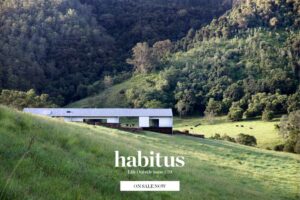
While most Singaporeans today live in an urban jungle made up of high-rise flats, the older generation often still look back fondly to the ‘good old days’ of the kampong (Malay for ‘village’), where life moved at an idyllic pace, neighbours kept their doors open to all, things were simple and good conversations were treasured.
The house at 26 Cable Road sensitively lifts some of the best memories of that life, and ushers it gently into a modern context, deliberately stepping past what is considered ‘fashionable’ or ‘groundbreaking’ in architecture to create a house that will preserve the memory of the past, serve as a home for the present, and be a place of residence for a future generation.

According to Yip Yuen Hong, ip:li architects’ principal architect and co-partner, the clients had liked what they had seen of the studio’s previous work, and so gave the creative team a good measure of creative freedom with the project.
One of the reasons Yip took inspiration from the attap kampong house was because it responded well to the local climate. “A kampong house relates to our weather such as heavy rain and high humidity. We were trying to extract the best of that,” he explains.

The 2-storey house is low scale with low ceiling heights, and allows the surrounding natural landscape and house to become one. “One cannot do without the other,” says Yip. A terrace encircled by trees also becomes a place for quiet conversation with the lushness of nature putting time at a standstill.
Two-metre overhanging roof eaves keep out the afternoon sun and heavy rains. The house is also built on stilts, creating an open public space on the ground that extends to the world outside. But there is still a sanctuary that one can head to on the upper floor’s heavily veiled private space.

In response to the idea of simple and modest living, the house is constructed using cheap and economical materials, such as wood, brick, plaster, paint, and mild steel coated with epoxy. This makes the house almost “anti-design”, says Yip.
It was a challenge at first to convince the clients that cheap materials “put together differently” could be “uplifting and fascinating”, Yip admits, but now he says, they love it.
“The rest of the family comes by a lot more to swim and have dinners… even when the owners are not around!”

For its reinterpretation of the best practices of tropical vernacular architecture in Southeast Asia, the project was recently named ‘Design of the Year’ at the President’s Design Award in Singapore.
ip:li architects











